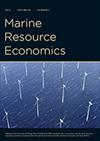中国海鲜贸易模式的决定因素
IF 1.7
3区 经济学
Q2 ECONOMICS
引用次数: 22
摘要
中国是世界上最大的海产品出口国,其海产品贸易格局的变化具有全球性影响。本文采用重力型模型对中国的贸易模式进行了研究。为了检验贸易模式是否因产品形态和物种群而异,估计了13种不同的模型。结果表明,不同产品类别的贸易模式存在很大差异。特别是生鲜和活产品形式的海鲜是一个单独的群体,其贸易受距离和收入水平的影响明显更大,而经济规模和地区显著影响其他形式产品的贸易。特别值得注意的是,运往非洲的产品单位价值较低。本文章由计算机程序翻译,如有差异,请以英文原文为准。
Determinants of China’s Seafood Trade Patterns
China is the world’s largest seafood exporter, and changes in its seafood trade patterns have global impacts. In this article, China’s trade patterns are investigated using a gravity-type model. To examine whether trade patterns vary by product form and species group, 13 different models are estimated. The results indicate substantial variation in trade patterns across product categories. In particular, seafood in the live and fresh product forms are a separate group for which trade is significantly more influenced by distance and income level, while the size of the economy and region significantly affects the trade of products in other forms. Particularly notable is the lower unit value of the products shipped to Africa.
求助全文
通过发布文献求助,成功后即可免费获取论文全文。
去求助
来源期刊

Marine Resource Economics
农林科学-渔业
CiteScore
4.30
自引率
10.30%
发文量
25
审稿时长
>12 weeks
期刊介绍:
Marine Resource Economics (MRE) publishes creative and scholarly economic analyses of a range of issues related to natural resource use in the global marine environment. The scope of the journal includes conceptual and empirical investigations aimed at addressing real-world oceans and coastal policy problems. Examples include studies of fisheries, aquaculture, seafood marketing and trade, marine biodiversity, marine and coastal recreation, marine pollution, offshore oil and gas, seabed mining, renewable ocean energy sources, marine transportation, coastal land use and climate adaptation, and management of estuaries and watersheds.
 求助内容:
求助内容: 应助结果提醒方式:
应助结果提醒方式:


